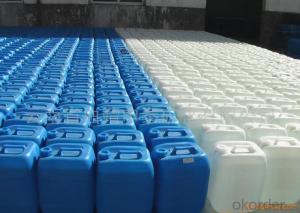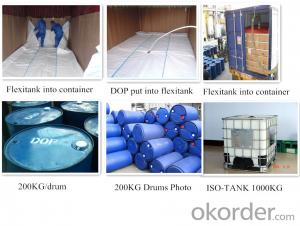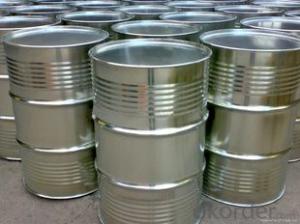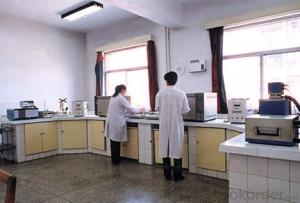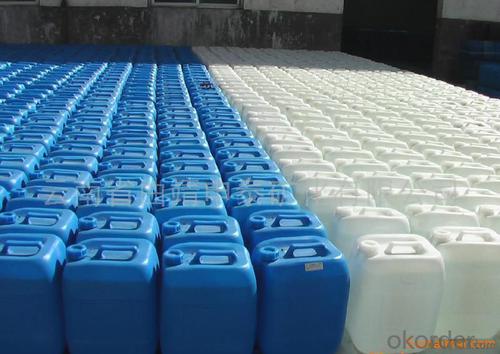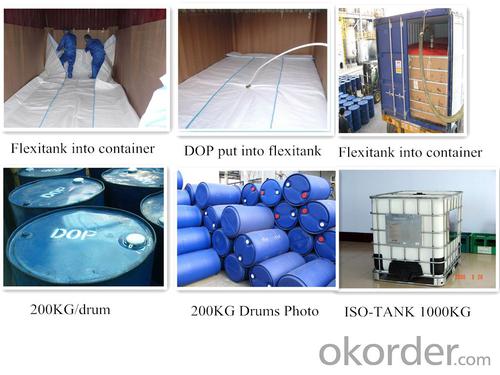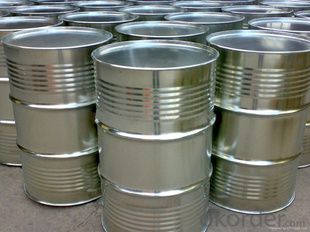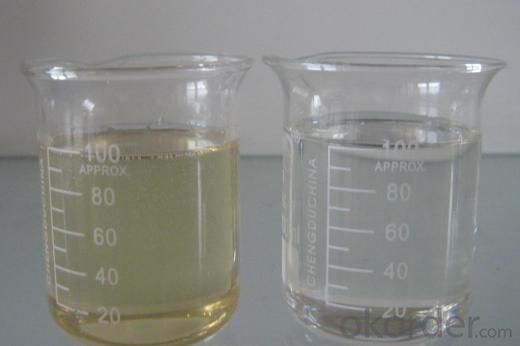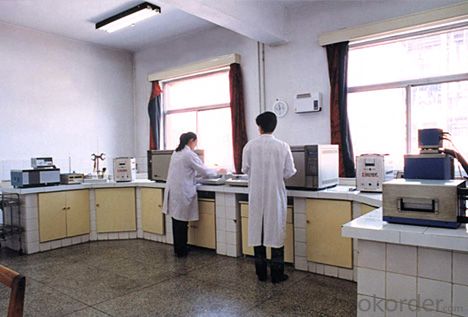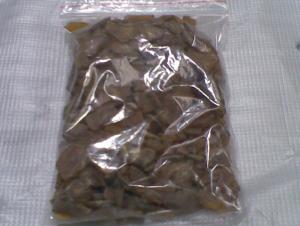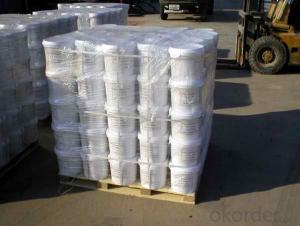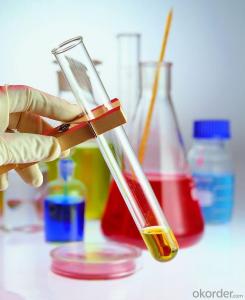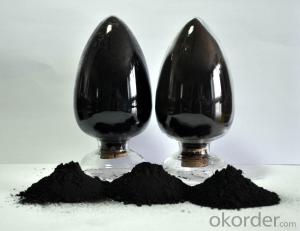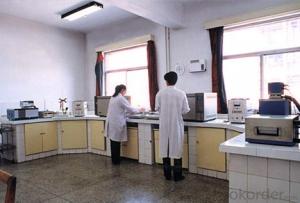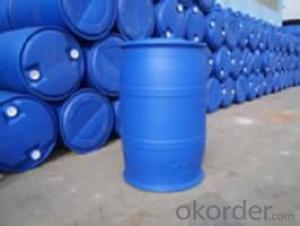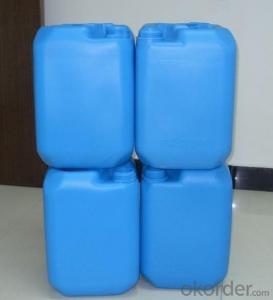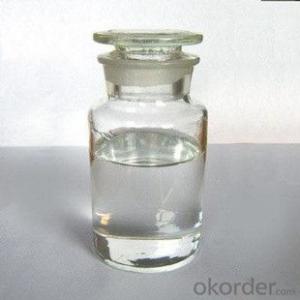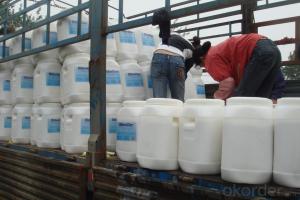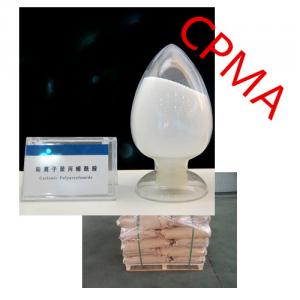Plasticizer Diethylene Glycol Dibenzoate DEDB
- Loading Port:
- Tianjin
- Payment Terms:
- TT OR LC
- Min Order Qty:
- 16.8
- Supply Capability:
- 8000 m.t./month
OKorder Service Pledge
OKorder Financial Service
You Might Also Like
Product performance:
Polyol Benzoate (DEDB) is colorless or pale yellow transparent oily liquid, water-insoluble, soluble in aromatic hydrocarbons, ketones and ethers, and has good compatibility withpolyvinyl chloride, ethylene - vinyl acetate copolymer, poly vinyl acetate, polymethylmethacrylate, polyvinylbutyral, nitrocellulose, and ethyl cellulose, etc.
Product application:
Polyol Benzoate(DEDB) is an environmentally friendly plasticizer with the characteristics of strong solubility, good compatibility, low volatility,resistant to oil, water, light, pollution etc. It is suitable for processing PVC flooring material, plastisol, artificial leather, cable material, soft and hard pipe, shoes material, rubber strips, synthetic rubber, and paint, printing ink, etc. It has a better plasticized effect if it is used together withDOP or DBP, and has greatly achieved the purpose of reducing cost .
Product quality index
Item | First grade | Second grade |
Chroma(APHA) ≤ | 50 | 60 |
Ester % ≥ | 99.5 | 90.0 |
Density(20°C)g/ | 1.120-1.126 | 1.172-1.78 |
Acidity(as benzene dicarbonic acid) % ≤ | 0.01 | 0.02 |
Flash Point °C ≥ | 195 | 192 |
Loss on heat(125°C,2 hours)% ≤ | 0.3 | 0.5 |
Chroma after heat treatment | 80 | 100 |
Specifications
1. Direct producer with 15 years experience
2. ISO9001:2000
3. High quality, lower price and best service
4. New plasticizer
Packaging: IBM, net weight: 1000 kg.
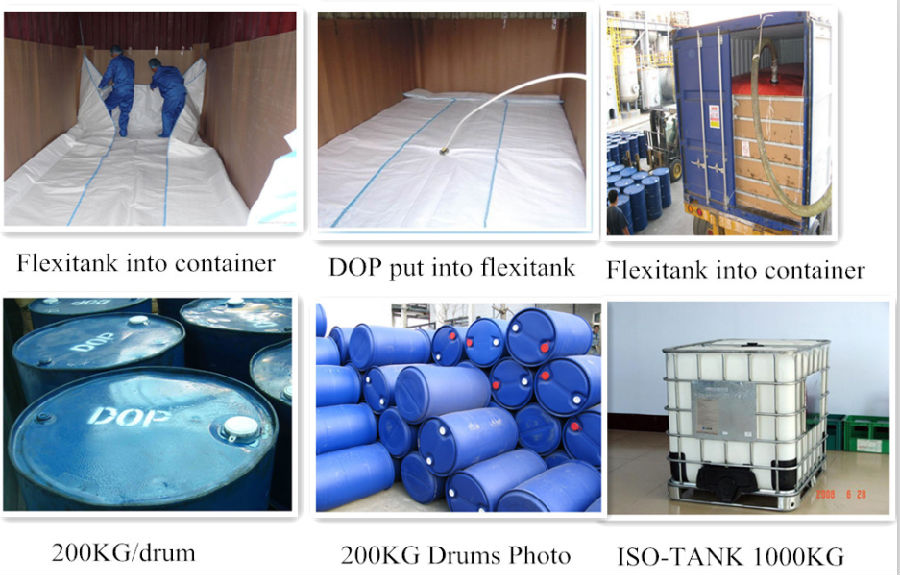 Our Factory:
Our Factory:
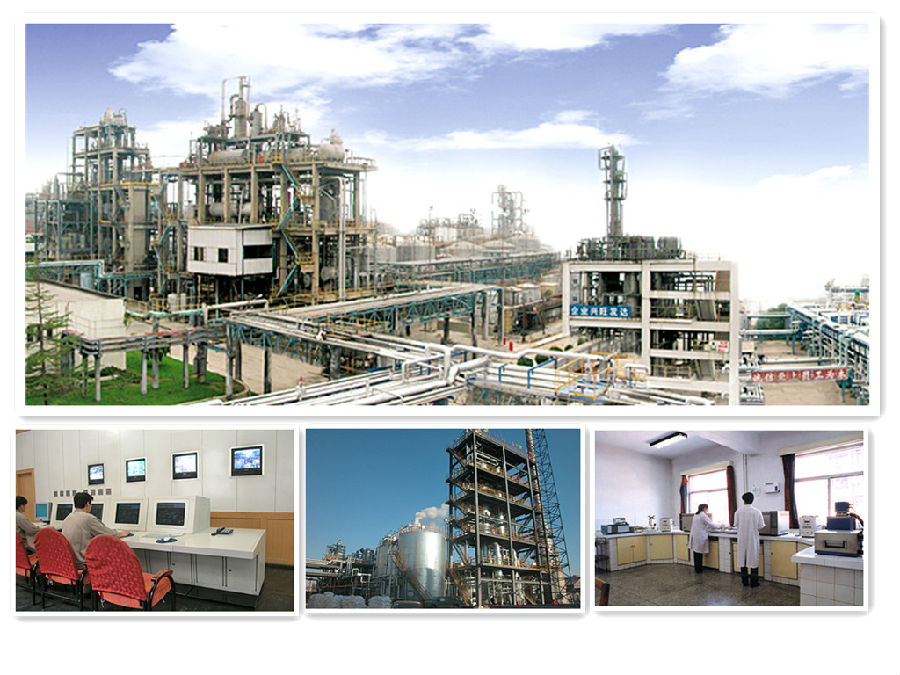
- Q: Does the catalyst participate in chemical reactions?
- In fact, my understanding is to participate in the reaction, but in the whole process of reaction is both a reactant and a product. But in the reaction process is to participate.
- Q: What is the catalyst for high chemistry?
- Concentrated sulfuric acid, NI, barium bromide, copper or silver
- Q: Briefly define a homogenous catalyst? Help please!?
- A homogenous catalyst is in the same phase as the rxn it is catalyzing. Most people think of catalysts as heterogenous: either sold (cat) liquid (rxn) (Raney Ni hydrogenation) or solid (cat) gas phase rxn) (catalytic convertors, NH3 production, SO2 oxidation, nitric acid production) polyethylene synthesis with Ziegler Natta catalysts. (Wikipedia). However starting probably with the Wilkinson hydrogenation catalyst Rh(PPh3)3Cl in 1966 a whole field of homogeneous catalysis has develope where the catayst is in soln. It proved to be a Renaissance for Inorg chem. These catalysts have several advantages over heterogenous catalysts: take place under mild conditions (green chem); the mechanisms are usually understood and can therefore be modified to be extremely specific for a substrate. There have been several Nobel Prizes in this area in the last decade because of their importance in organic synthesis: 2010, 2005, 2001. The one type of homolytic gas phase catalysis rxn I can think of are those that involve a radical chain mechanism: destruction of O3 by Cl? and chlorination (bromination) of alkanes.
- Q: what is metallocene catalyst technology?
- Metallocene catalyst A transition-metal atom sandwiched between ring structures having a well-defined single catalytic site and well-understood molecular structure used to produce uniform polyolefins with unique structures and physical properties. See also Catalysis; Coordination chemistry; Coordination complexes; Metallocenes; Organometallic compound. In the early 1980s, W. Kaminsky discovered that an appropriate co-catalyst activated metallocene compounds of group 4 metals, that is, titanium, zirconium, and hafnium, for alpha-olefin polymerization, attracting industrial interest. This observation led to the synthesis of a great number of metallocene compounds for the production of polymers already made industrially, such as polyethylene and polypropylene, and new materials. Polymers produced with metallocene catalysts represent a small fraction of the entire polyolefin market, but experts agree that such a fraction will increase rapidly in the future. See also Polymer; Polymerization; Polyolefin resins.
- Q: I dont know what it is but when i open up my computer it comes up and it says that its not working? so i really dont know what to do.
- ATI Catalyst Control Centre is a control program for ATI graphics cards. If you have an ATI graphics card, go to the ATI website and download and reinstall the program.
- Q: What is the catalyst for ethylene addition water? How to play a catalytic role.
- Phosphoric acid or sulfuric acid, 280 to 300 ° C, 7 to 8 MPa
- Q: and what type of macromolecule are they made of? thanks!
- Enzymes okorder /...
- Q: In the chemical reaction will have to use the catalyst reaction, such as H2O2 === (MnO2) H2O + O2 ↑, then the catalyst in the end to participate in the reaction (that is, the catalyst itself is the reactant) If so, why are some of these substances in the reaction (these substances refer to the catalyst) in the reaction after the quality and nature of the change does not change?
- The definition of a chemical reaction rate in a chemical reaction can be changed (accelerated or slowed down) in a chemical reaction, and the quality and chemical properties of the substance itself are not catalyzed before and after the reaction (which will change during the reaction) Also known as catalyst. Its physical properties may change, for example, MnO2 in the catalytic potassium chlorate to generate potassium chloride and oxygen before and after the reaction from the block into a powder. There is also a saying that the catalyst reacts first with one of the reactants and then the two products continue to undergo a new chemical reaction under the original conditions and the reaction conditions of the catalyst reaction product are more favorable than the reaction conditions of the original reactants Changed.
- Q: Will the catalyst decompose during the reaction between two substances? Exp:the decomposition of hydrogen peroxide.Will the manganese 4 oxide decompose?
- Catalysts are not used/destroyed in any reactions, it merely speeds up the process by lowering the reaction activation energy. It functions by being able to weaken or break the required bonds necessary in the chemical reaction (thus lowering activation energy) through temporary and weak bonding to form a complex. In this case the H2O2 molecule will bind with the MnO2 molecule due to the complimentary sites (thus forming a complex) to weaken the bonds for decomposition, but after decomposition the products (oxygen and water molecules) break off from the catalyst (as there are no more complementary sites with them) thus the catalyst will not be destroyed.
- Q: How does the catalyst generally add to the organic chemical reaction?
- In the case of heterogeneous catalysis, the specific surface of the catalyst, in addition to the activity of the catalyst, is an important factor in determining the reaction rate, which means that the specific surface for catalysis is large and the reaction is as fast as the whole. So the overall principle in understanding the activity of the premise of the catalyst, would like to quickly add a little more.
Send your message to us
Plasticizer Diethylene Glycol Dibenzoate DEDB
- Loading Port:
- Tianjin
- Payment Terms:
- TT OR LC
- Min Order Qty:
- 16.8
- Supply Capability:
- 8000 m.t./month
OKorder Service Pledge
OKorder Financial Service
Similar products
Hot products
Hot Searches
Related keywords
